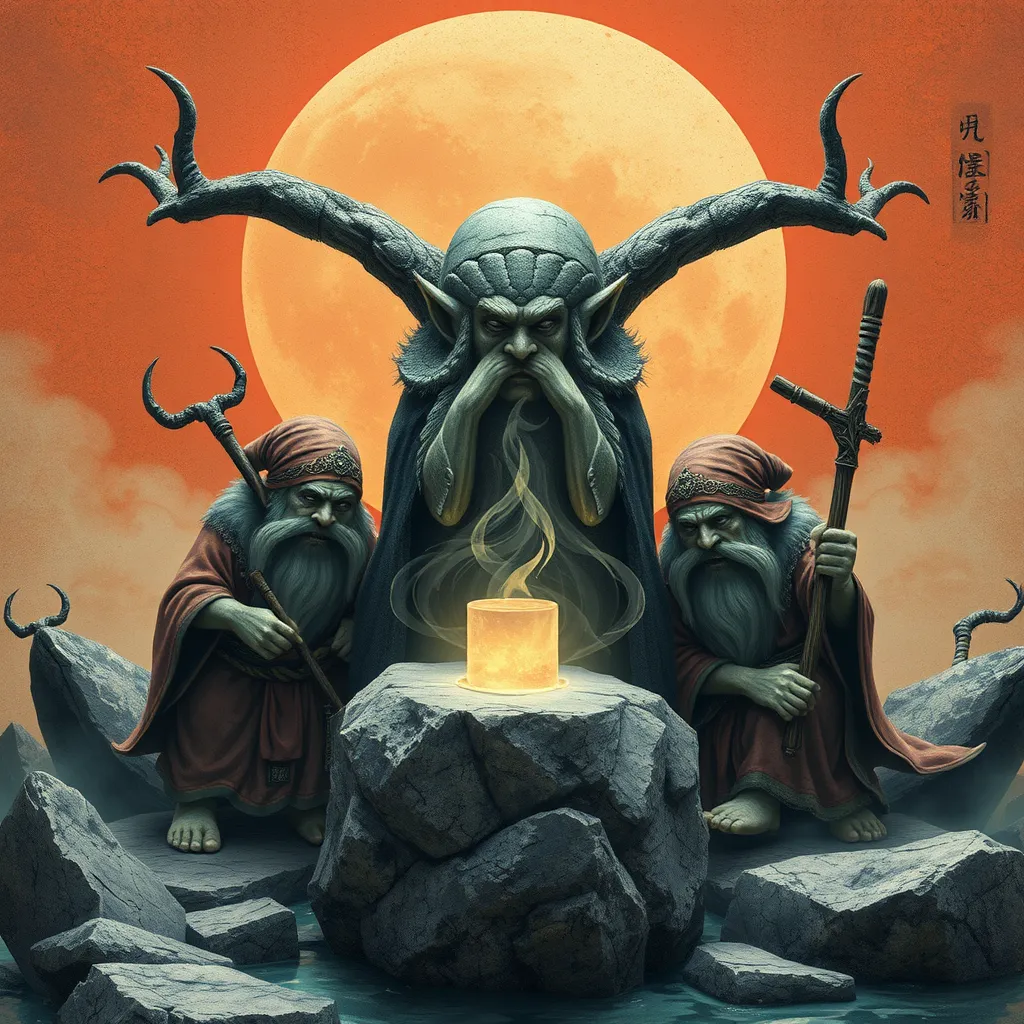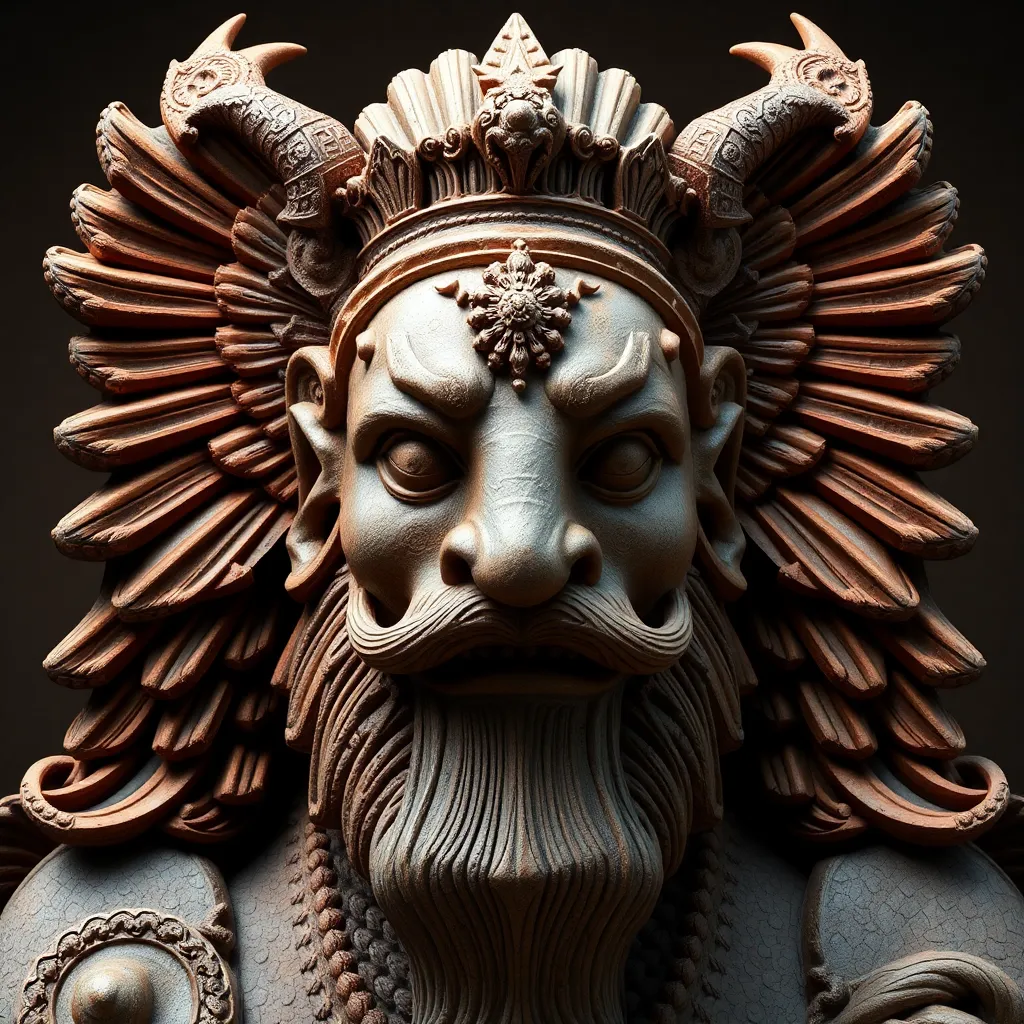The Basilisk in Roman Mythology: Exploring the Monster’s Influence on Roman Art and Culture
I. Introduction
The Basilisk, a legendary creature of Roman mythology, is often depicted as a fearsome serpent or dragon, notorious for its lethal gaze. In the realm of cultural narratives, the Basilisk holds a unique position, symbolizing both danger and power. This article delves into the Basilisk’s representation within Roman art and culture, highlighting its origins, literary appearances, artistic depictions, and the broader implications of its symbolism.
II. Origins of the Basilisk: Mythological Roots
The origins of the Basilisk can be traced back to ancient texts and folklore, where it emerged as a creature of great fear and mystery. Various historical accounts describe its emergence in different cultural contexts.
- Historical accounts: The Basilisk is believed to have originated from the writings of ancient authors such as Pliny the Elder, who described it as a small serpent capable of killing with its gaze.
- Connection to earlier mythologies: The creature has links to various mythologies, including Greek and Egyptian, where similar serpent-like beings symbolize chaos and death.
Characteristically, the Basilisk is often depicted with a crown-like crest, symbolizing its royal and fearsome nature. Its attributes include:
- A poisonous bite
- The ability to kill plants and animals with its gaze
- Association with the sun, often seen as a creature of light and darkness
III. The Basilisk in Roman Literature
The Basilisk surfaces in various ancient texts, capturing the imagination of Roman writers and poets. References to the creature can be found in works by authors such as Ovid and Virgil.
- Literary portrayals: In these texts, the Basilisk is often depicted as a formidable adversary, embodying the themes of fear and destruction.
- Significance: Its portrayal serves as a cautionary symbol, warning against hubris and the dangers of unchecked power.
Moreover, the Basilisk plays a role as a metaphor in Roman storytelling, representing the internal struggles of individuals against external threats. As such, it becomes a symbol of resilience and the human condition.
IV. Artistic Representations of the Basilisk
In Roman art, the Basilisk is represented through various mediums, showcasing its influence on visual culture. Notable artistic forms include:
- Mosaics and frescoes: Basilisk imagery can be found in elaborate mosaics that adorn the floors of Roman villas, often depicted in dynamic poses to emphasize its deadly nature.
- Sculpture and decorative arts: Statues and reliefs frequently feature the Basilisk, illustrating its importance in Roman mythology and as a decorative motif.
The themes and motifs associated with the Basilisk in visual art often revolve around power, fear, and the duality of life and death, reflecting the creature’s complex symbolism within Roman culture.
V. The Basilisk’s Symbolism in Roman Culture
The Basilisk carries various associations within Roman culture, contributing to its enduring legacy. Key symbolic meanings include:
- Death and danger: The Basilisk is often seen as a harbinger of death, instilling fear in those who believe in its powers.
- Protection: Conversely, the Basilisk also serves as a protective emblem, warding off evil and danger, particularly in amulets and talismans.
- Power and authority: Its regal appearance and lethal qualities make the Basilisk a symbol of power, often associated with rulers and divine authority.
In religious and mythological contexts, the Basilisk’s significance is elevated, representing the struggle between good and evil, light and darkness.
VI. The Basilisk in Roman Folklore and Superstitions
The Basilisk’s influence extends into the realm of folklore and societal beliefs. Folk narratives often surround the creature, creating a tapestry of superstitions and rituals.
- Folk beliefs: Many believed that the Basilisk could kill with its gaze, leading to widespread fear and fascination.
- Rituals and protective measures: To protect against the Basilisk, various rituals emerged, such as carrying specific herbs or wearing protective amulets.
This interplay between belief and fear has shaped societal values, reflecting the human need to understand and confront the unknown.
VII. The Legacy of the Basilisk in Subsequent Cultures
The Basilisk’s legacy extends beyond Roman mythology, influencing later artistic and cultural narratives. Its evolution can be seen in:
- Medieval and Renaissance art: The Basilisk transforms into various forms, often depicted alongside other mythological creatures, maintaining its fearsome reputation.
- Comparisons with similar creatures: The Basilisk shares characteristics with creatures like the Cockatrice, revealing a common thread in various mythologies that explore similar themes of fear and power.
In modern culture, the Basilisk continues to captivate audiences, appearing in literature, film, and games, showcasing its lasting relevance and the enduring fascination with mythological creatures.
VIII. Conclusion
In summary, the Basilisk’s impact on Roman art and culture is profound, weaving a narrative that intertwines fear, power, and protection. Its presence in literature and visual arts highlights the creature’s multifaceted symbolism, reflecting broader cultural values and beliefs.
The enduring fascination with the Basilisk underscores the significance of mythological creatures in shaping cultural narratives, inviting reflection on the human experience and our relationship with the unknown. As a symbol of danger and authority, the Basilisk remains a compelling figure, continually inspiring awe and exploration across generations.




